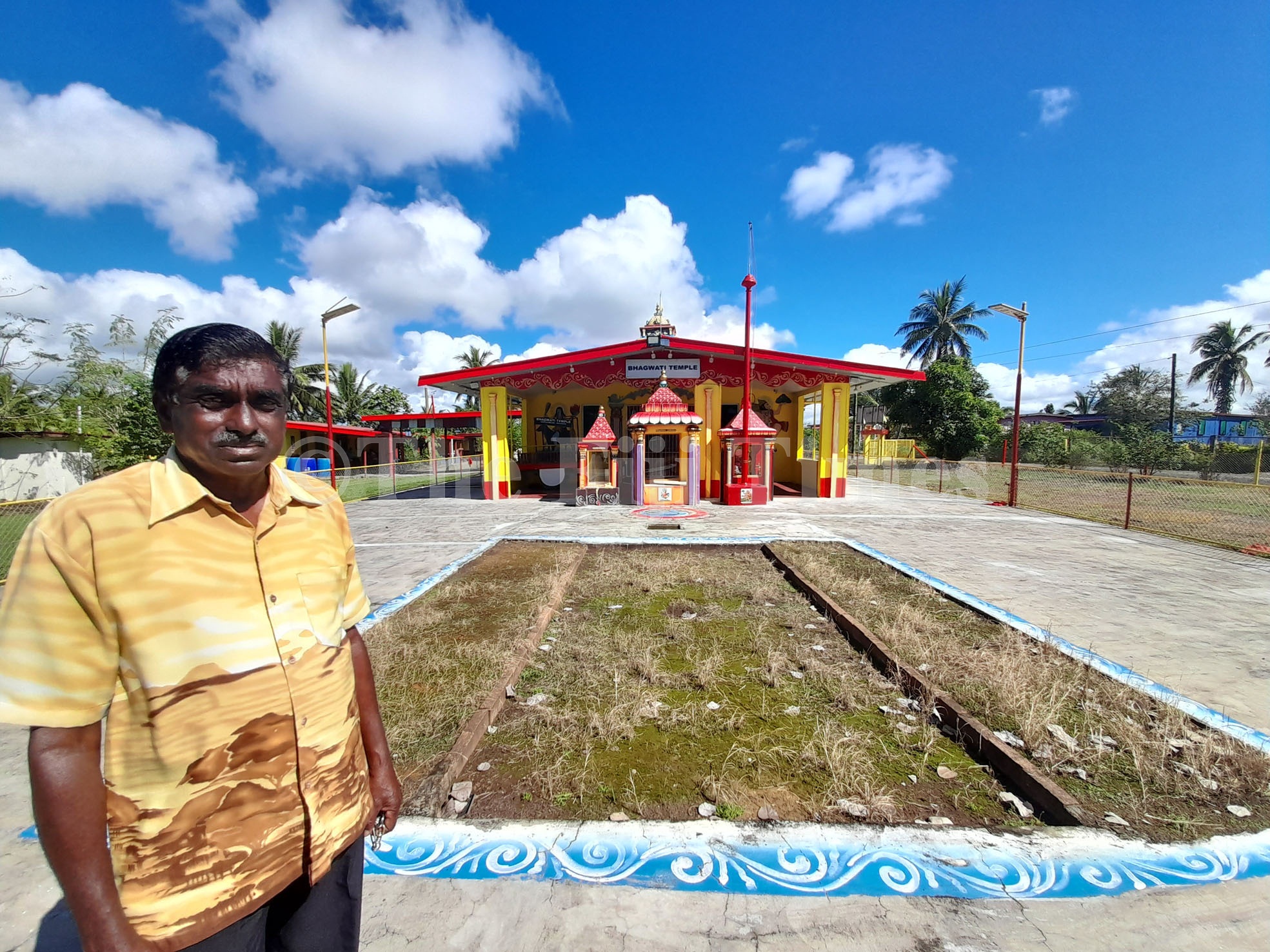From a small shrine established to preserve the culture of firewalking for its Hindu devotees, the Bhagwati temple has today become one of the most renowned in Fiji and it is renowned for its annual firewalking ceremony.
People all around Fiji and internationally have travelled to attend and witness the firewalking ceremony held at the temple every year between May and June.
The temple was established in 1946 by Damodran Nair to protect South Indian culture and traditions among the people of Fiji.
The Bhagwati temple at Korociri Rd, Nausori, was built by Mr Nair after conducting firewalking ceremonies at the Howell Rd temple for more than 20 years.
He decided it was time for a similar shrine in his home community.
“All this land was used for cane farming before and with the help of my lawyer, I managed to get the land during the colonial period,” the 95-year-old said.
“I formed a committee, and they established this temple. It was very small in the beginning as I made it with whatever I had.
“The construction would have not been possible without the help of close associates which include Messers Raja Ram Chetty, late Papaiya Naidu, late councillor Devi Chand, late Suruj Ram, late Krishna Poonan, late C.D. Singh and other community members.”
Mr Nair said he had also worked at a temple in Vuci, Nausori, for 18 years.
However, it was the Bhagwati temple where he spent most of his time and effort.
He said as it grew in popularity and the number of devotees and members increased, the initial building had to be replaced and it was further extended in 1978.
He said he conducted the first firewalking ceremony in 1976 with only the community members.
“The firewalking ritual is primarily dedicated to ‘Amman’, Maa Draupadi, an important female deity of Mahabharata and many other deities which are directly or indirectly related to the Shakti
cult.”
He said firewalking was believed to be an act of self-purification.
“For devotees, it is part of a vow in which the devotee promises to walk on fire for a wish or blessing granted by Amman.
“People believe that if they are blessed by Amman then they will come out unscathed.
“The person who performs the firewalking needs to adhere to strict austerities for 21 days which include avoiding non-vegetarian food, alcohol, and physical intimacy with their partners and it also includes sleeping on a simple mattress on the floor and performing rituals thrice daily.
“Ten days before the actual ritual takes place, special worship is offered to the goddess, thrice daily.
“On the day of the actual ceremony, the devotees observe a fast and bathe in the temple premises and offer prayers in the temple along with the others who have taken a similar vow.
“Kavadi (Trishul) is a penitent ritual where devotees, after a long vegetarian fast and intensifying mediations, experience a trance-like state and are able to pierce their bodies with different types of hooks or skewers.”
He said during the final day, some devotees had small skewers pierced through their tongues or larger ones through their cheeks; others had garlands and rosaries hanging from hooks piercing their chest and back, or carried strings of limes and marigolds in the same manner.
“People, both local and tourists, find this practice very fascinating and exciting as it shows the power of fasting and adhering to the rules of this ceremony.
“I walk over the fi re first and place the garland and other things on the charcoals and later the other devotees follow and walk along the whole area.
“It is important that we do not lift our feet high and walk as slowly and calmly as we can and nothing should be over their feet or body to prevent burns.
“To walk over fi re successfully, one should have no fear and or doubts rather should have deep concentration and belief in this tradition.”
He said it was strongly believed that sincere worship fulfilled the wishes of the devotees and that faith attracted hundreds of others to the temple every year.
Mr Nair was also well-known for his tirikuttu dances many years ago.
He said over the years the temple had faced many challenges, however, there had been an increase in devotees despite
this.
“Getting finance for the extension was very difficult, but thanks to our members and devotees such as CD Singh who allowed us to extend our small temple with proper fencing, walkaway and roofing which has provided shelter from the elements.
“Nowadays, it’s very difficult to get the youths to take part in such cultural events and that’s our ongoing challenge.”
The nonagenarian said he had taught his eldest son, Govindan Murti, about the process in an effort to preserve their firewalking tradition.
“My eldest son has become the priest in this temple now and I am at peace, knowing he will continue the work that I have started.
“I monitor him and guide him whenever there is a need.
“The temple is well established now so there are no future plans apart from protecting our culture from modernisation and other influences.”




